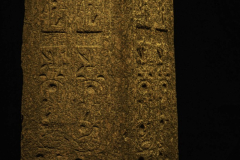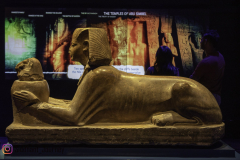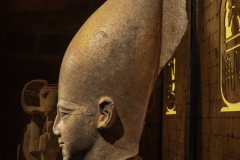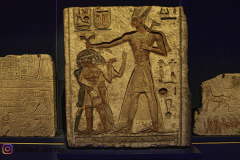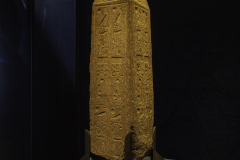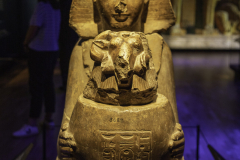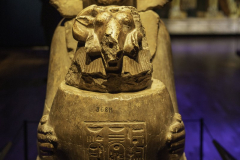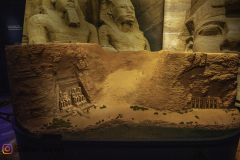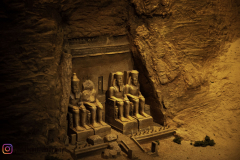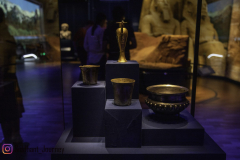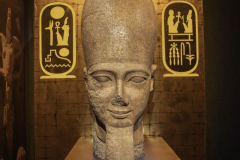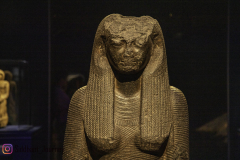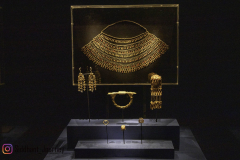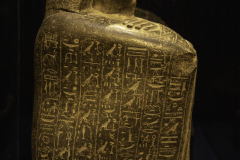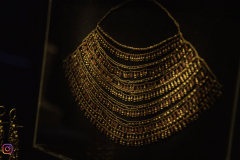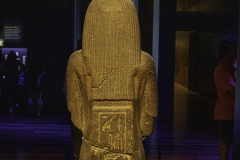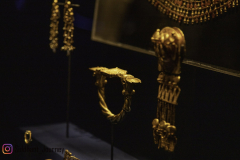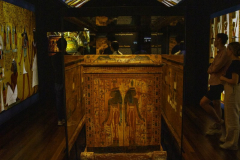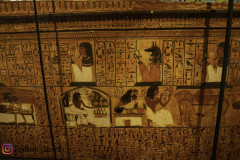Author: Siddhant N.
Warragamba Dam Views and Visitor Centre. Late August 2022. Western Sydney
Yellomundee Regional Park and Lookout Blue Mountains Motorbike Ride From Penrith
Byron Bay- Failed sunrise photoshoot lead to amazing beach.
Early Morning Photoshoot Attempt : Birdie Beach, NSW (Audio: Hindi)
Journeying through Time: Unearthing the Majestic Ramses and Gold of the Pharaohs Exhibition At Australian Museum (Audio Hindi)
Check out the photos on link below
The Ramses and Gold of the Pharaohs exhibition held at the Australian Museum is a remarkable display of ancient Egyptian civilization. This exhibition focuses on the legacy of Ramses II, one of Egypt’s most renowned pharaohs, as well as the precious gold artifacts associated with his reign. Through an impressive collection of over 150 intriguing artifacts, visitors have the unique opportunity to delve into the opulent world of ancient Egypt. The exhibition showcases not only exquisite jewelry but also ceremonial objects, statues, and even a golden chariot replica that highlight Ramses’ immense power and wealth. In addition to offering a glimpse into the extraordinary craftsmanship and artistic prowess of this era, it also provides valuable insights into the religious beliefs, political structure, and daily life of ancient Egyptians. The detailed explanations accompanying each artifact enhance the educational experience for visitors while ensuring that experts and enthusiasts alike can fully appreciate this exceptional exhibition. Overall, Ramses and Gold of the Pharaohs offers an engrossing exploration of ancient Egypt’s monumental heritage in a visually captivating presentation at the Australian Museum.
Ramses And Gold Of The Pharoahs Sydney Exhibition
Ramses: A History Of The Pharoah
The legacy of Ramses II, also known as Ramses the Great, stands as a testament to the grandeur and power of the ancient Egyptian pharaohs. As one of the most celebrated rulers in Egypt’s history, Ramses II left behind a rich and awe-inspiring cultural heritage. Among the many treasures associated with Ramses II, gold holds a prominent position. The fascination with gold in ancient Egypt, coupled with the discovery of Ramses II’s tomb and the abundance of golden artifacts within, offers a captivating glimpse into the opulence and symbolism attached to this precious metal in pharaonic culture. This article delves into the captivating world of Ramses II and the gold of the pharaohs, unraveling the stories, significance, and allure behind these remarkable treasures.
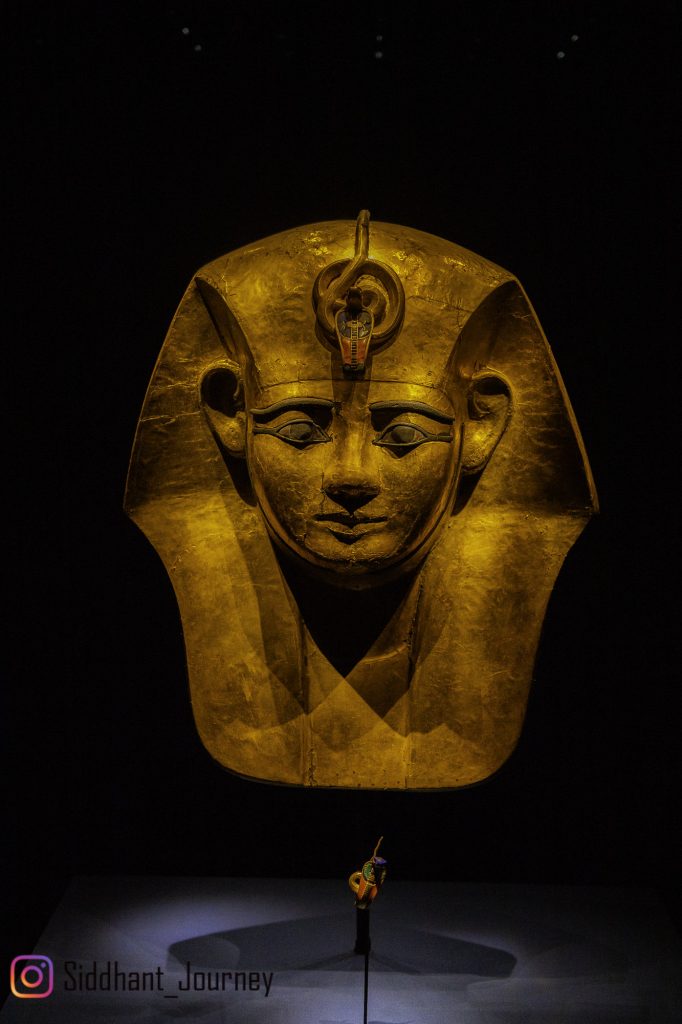
1. Introduction to Ramses II: The Powerful Pharaoh
1.1 The Life and Rule of Ramses II
Ramses II, also known as Ramses the Great, was one of the most powerful pharaohs in ancient Egypt. He ruled for an impressive 66 years, from 1279 to 1213 BCE. During his reign, Ramses II established Egypt as a dominant force in the region and left behind a legacy that continues to fascinate historians and archaeologists today.
1.2 Ramses II’s Legacy: Influence on Ancient Egypt
Ramses II’s impact on ancient Egypt cannot be overstated. He was a prolific builder, constructing numerous awe-inspiring monuments and temples throughout the kingdom. Most notably, he commissioned the construction of the magnificent Abu Simbel temples, which still stand proudly on the banks of the Nile River.
In addition to his architectural feats, Ramses II was a skilled military strategist. He led several successful military campaigns, expanding Egypt’s territory and securing its borders. He also played a significant role in shaping cultural and religious practices during his reign, leaving his mark on ancient Egyptian society.
2. The Obsession with Gold in Ancient Egypt
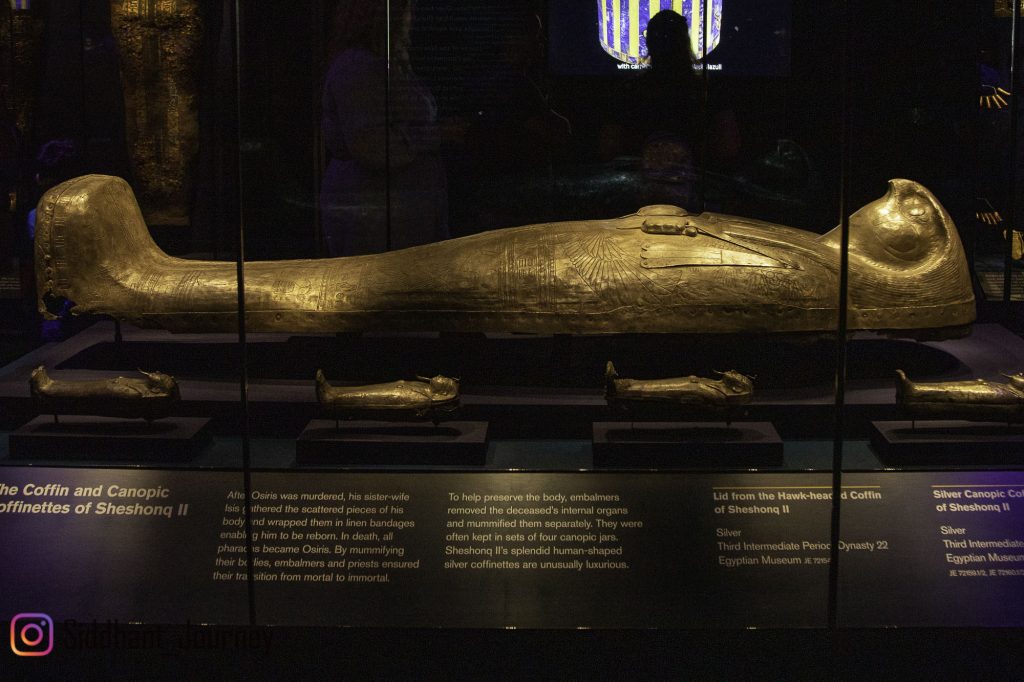
2.1 Significance of Gold in Ancient Egyptian Culture
Gold held immense value and symbolism in ancient Egyptian culture. It was associated with the divine and considered a material fit for the gods and pharaohs. The Egyptians believed that gold was the flesh of the sun god, Ra, and its brilliance represented eternal life and wealth. As a result, gold was highly sought after and used in various aspects of Egyptian life, from religious rituals to personal adornment.
2.2 Gold Mining and Extraction Techniques
To fulfill their obsession with gold, the ancient Egyptians developed sophisticated techniques for mining and extracting the precious metal. They primarily sourced gold from the Nubian Desert, using both surface mining and underground tunnels to access the rich deposits. Once extracted, the gold was processed using crushing, grinding, and smelting methods to separate it from the surrounding rock. These advanced techniques allowed the Egyptians to amass significant amounts of gold for their various purposes.
3. The Discovery of Ramses II’s Tomb: Unearthing a Treasure Trove
3.1 The Excavation of Ramses II’s Tomb
The discovery of Ramses II’s tomb in the Valley of the Kings in 1881 was a monumental moment in archaeology. Led by renowned archaeologist Gaston Maspero, the excavation team painstakingly unearthed the burial chamber of Ramses II. The tomb, though looted in ancient times, still contained remarkable artifacts and insights into the life of this legendary pharaoh.
3.2 Archaeological Significance of the Findings
The discovery of Ramses II’s tomb provided valuable information about ancient Egyptian burial practices and the level of grandeur associated with pharaohs. The presence of numerous funerary objects, including statues, jewelry, and pottery, displayed the opulence reserved for the elite in the afterlife. The findings also shed light on the religious beliefs and cultural traditions of ancient Egypt, offering a glimpse into a civilization that continues to captivate the world.
4. The Extravagant Use of Gold in Ramses II’s Burial Chamber
4.1 Description of Ramses II’s Burial Chamber
Ramses II’s burial chamber was a testament to the pharaoh’s status and the importance of gold in ancient Egypt. The chamber itself was vast and adorned with intricate carvings and paintings, depicting scenes from Egyptian mythology and the pharaoh’s accomplishments. The walls were covered in gold leaf, casting a warm and ethereal glow throughout the chamber.
4.2 Gold Adornments and Decorations
Gold played a significant role in the adornments and decorations within Ramses II’s burial chamber. The sarcophagus, in which the pharaoh’s mummified body was placed, was made of solid gold, further emphasizing the belief in the divine nature of this precious metal. The funerary masks, jewelry, and even the furniture within the chamber were elaborately crafted from gold, showcasing the pharaoh’s wealth and status even in death.
Ramses II’s tomb stands as a testament to the grandeur and obsession with gold in ancient Egypt, leaving us in awe of the power and opulence of this legendary pharaoh.
5. The Symbolism of Gold in Pharaonic Culture
Gold held a special place in the hearts (and adornments) of ancient Egyptians. It wasn’t just a shiny metal; it was a symbol of power, divinity, and the regal splendor of the pharaohs. Let’s delve into the significance of gold in their culture.
5.1 Gold as a Symbol of Royalty and Divinity
In ancient Egypt, gold was synonymous with royalty. The pharaohs, considered living gods, made sure to flaunt their divine status by encrusting themselves in gold. From golden crowns adorning their heads to intricate jewelry gracing their bodies, gold was the precious metal of choice for the rulers of Egypt.
The gleaming yellow hue of gold mirrored the sun, which Egyptians worshipped as a deity. By donning gold, the pharaohs sought to establish a connection to the gods and convey their divine authority to their subjects.
5.2 Religious and Spiritual Significance of Gold
Beyond its association with pharaonic power, gold held immense religious and spiritual significance for the ancient Egyptians. They believed that the gods themselves possessed bodies of pure gold. Temples and statues dedicated to deities were often covered in gold leaf, an homage to the divine.
Moreover, gold was believed to have protective and purifying qualities. It was used in funerary rites to guide the deceased through the afterlife and ward off evil forces. The Egyptians were so enamored with gold’s spiritual properties that they even believed it could grant immortality.
6. Unveiling the Secrets of Ramses II’s Golden Artifacts
Now, let’s turn our attention to Ramses II, one of Egypt’s most revered pharaohs, and the golden artifacts that have survived the test of time.
6.1 Analysis of Ramses II’s Golden Artifacts
Ramses II, also known as Ramses the Great, left a glittering legacy. His golden artifacts reveal not only his opulence but also his keen eye for detail and craftsmanship. Intricately carved gold statues, exquisite jewelry, and golden sarcophagi bear testament to his extravagant reign.
These artifacts provide us with a glimpse into the life and times of Ramses II, showcasing his wealth and power, as well as the artistic mastery of the craftsmen who created them.
6.2 Techniques Used in Crafting Pharaonic Gold Art
Crafting pharaonic gold art was no ordinary feat. The ancient Egyptians employed techniques like gold casting, filigree, and granulation to fashion their masterpieces. Gold was shaped into delicate forms, and gemstones were often incorporated to add color and further enhance their allure.
These ancient artisans understood the properties of gold, its malleability, and its ability to withstand the test of time. Their craftsmanship, combined with the wealth of Ramses II, resulted in extraordinary artifacts that continue to captivate us today.
7. The Legacy of Ramses II: Gold and Egypt’s Ancient Civilization
Ramses II’s golden reign left an indelible mark on Egyptian history and culture. Let’s explore the lasting impact he had on subsequent pharaohs and the influence of gold on Egyptian art, trade, and society.
7.1 Influence of Ramses II on Subsequent Pharaohs
Ramses II set a royal standard that many pharaohs sought to emulate. His grandiose use of gold as a symbol of power and divinity became a tradition amongst his successors. The obsession with gold persisted throughout Egyptian history, marking the pharaoh as the supreme bearer of wealth and authority.
7.2 Gold’s Impact on Egyptian Art, Trade, and Society
The importance of gold extended beyond the realm of the pharaohs. Its influence permeated Egyptian art, influencing the aesthetics of statues, jewelry, and even architecture. Gold became a sought-after commodity, leading to prosperity and trade within the ancient civilization. Its value reached far beyond its material worth.
Gold also played a crucial role in Egyptian society, both in terms of religious rituals and personal ornamentation. It symbolized wealth, status, and was an integral part of Egyptian culture.
8. Conclusion: Ramses II’s Golden Reign and the Enduring Fascination with Pharaohs
Ramses II’s affinity for gold and the astonishing artifacts he left behind continue to captivate our imagination. The symbolism of gold in pharaonic culture, the intricate craftsmanship, and the lasting legacy of Ramses II highlight the magnificence of ancient Egypt.
Even today, the allure of the pharaohs and their golden treasures persists, reminding us of a civilization that valued power, divinity, and the eternal splendor of this precious metal. Let Ramses II’s golden reign inspire us to appreciate the enduring fascination with Egypt’s ancient civilization.
8. Conclusion: Ramses II’s Golden Reign and the Enduring Fascination with Pharaohs
In conclusion, Ramses II’s reign as a powerful pharaoh left an indelible mark on ancient Egyptian history. The extensive use of gold in his burial chamber and the numerous golden artifacts discovered within his tomb showcase the immense wealth and reverence associated with this iconic ruler. The enduring fascination with pharaohs and the allure of their golden treasures continues to captivate the world, allowing us to appreciate the splendor and cultural significance of Ramses II and the gold of the pharaohs. Through their legacy, these precious artifacts provide a tangible connection to a bygone era, reminding us of the remarkable achievements and timeless allure of Egypt’s ancient civilization.
FAQ
1. Why was gold so important in ancient Egypt?
Gold held immense significance in ancient Egyptian culture for several reasons. It was associated with the sun god Ra, symbolizing divinity, power, and the eternal nature of the pharaohs. Gold was also believed to possess magical and protective properties, making it an integral part of religious rituals and ceremonies. Additionally, gold was considered a symbol of wealth, luxury, and prosperity, reflecting the grandeur and opulence of the pharaohs.
2. What was the significance of Ramses II’s golden artifacts?
Ramses II’s golden artifacts hold great significance as they provide a glimpse into the artistry, craftsmanship, and wealth of ancient Egypt. These artifacts, such as elaborate jewelry, statues, and ornate burial items, demonstrate the meticulous attention to detail and skill of the artisans of that time. They also serve as a testament to Ramses II’s legacy and his desire to leave a lasting mark on Egyptian history through the use of precious metals, particularly gold.
3. How were Ramses II’s golden artifacts discovered?
Ramses II’s golden artifacts were discovered during the excavation of his tomb in the Valley of the Kings, located on the west bank of the Nile River near modern-day Luxor. The tomb, known as KV7, was the final resting place of Ramses II and was discovered by archaeologists in the early 19th century. The tomb contained a treasure trove of valuable items, including golden artifacts, which provided invaluable insights into the wealth and splendor of the pharaoh during his reign.
4×4 vs 2WD: Which Vehicle is Ideal for Driving in the Australian Outback?
The Australian Outback is a vast and awe-inspiring landscape known for its rugged terrain, extreme weather conditions, and unique wildlife. Driving in this remote and challenging environment requires careful consideration of the vehicle choice to ensure both safety and efficiency. In this article, we will explore the advantages and disadvantages of 4×4 vehicles and 2WD vehicles for navigating the Australian Outback. By evaluating factors such as off-road performance, safety considerations, fuel efficiency, and practicality, we aim to provide readers with valuable insights to help make an informed decision when it comes to selecting the ideal vehicle for driving in the Australian Outback.
1. Introduction: Understanding the Terrain and Challenges of the Australian Outback
1.1 The vastness and uniqueness of the Australian Outback
Ah, the Australian Outback. A land as vast as your never-ending to-do list and as unique as that one-of-a-kind souvenir you bought on your last vacation. It stretches for miles and miles, captivating adventurers with its rugged beauty and untamed wilderness.
1.2 The rugged terrain and potential obstacles
But don’t be fooled by its breathtaking landscapes. The Outback is not for the faint of heart. Its terrain is as unpredictable as the weather forecast, with rocky outcrops, sandy deserts, and treacherous waterways that can throw even the most seasoned driver off course.
1.3 Importance of vehicle choice for Outback driving
Given the challenges that the Australian Outback presents, choosing the right vehicle for your adventure becomes a crucial decision. It’s like picking the perfect outfit for a first date – you want something that makes you look good and gets the job done without any embarrassing mishaps. So, let’s dive into the comparison between 4×4 and 2WD vehicles and see which one comes out on top.
2. Exploring the Benefits of 4×4 Vehicles in the Outback
2.1 Increased traction and off-road capabilities
When it comes to tackling the wild and unruly Outback, 4×4 vehicles are like the superhero of the road. With power going to all four wheels, these beasts provide better traction, meaning you can conquer steep slopes, sandy surfaces, and muddy tracks with confidence.
2.2 Enhanced stability and control on uneven surfaces
Driving in the Outback can feel a bit like riding a rollercoaster, except without the safety harness. That’s where 4×4 vehicles shine, offering enhanced stability and control on those bumpy, uneven terrains. They handle the dips and bumps like a pro, leaving you feeling less like a shaken cocktail and more like a smooth operator.
2.3 Ability to handle steep inclines and declines
The Outback isn’t afraid to throw some steep hills your way. Fortunately, 4×4 vehicles are built to take on these challenges head-on. With their impressive hill-climbing and descent control features, you can conquer those intimidating slopes without breaking a sweat. It’s like having your own personal cheerleader, cheering you on with every ascent and descent.
3. Evaluating the Advantages of 2WD Vehicles for Outback Driving
3.1 Higher fuel efficiency and lower cost of ownership
If you’re the kind of person who cringes at the thought of spending a small fortune on fuel, then 2WD vehicles might be your saving grace. Thanks to their simpler drivetrain, these vehicles tend to be more fuel-efficient than their 4×4 counterparts. Plus, they often come with a lower price tag, which means more money in your pocket for those Australian souvenir magnets.
3.2 Smooth ride quality on well-maintained roads
Let’s face it – not every Outback adventure involves getting down and dirty in the muddiest of terrains. Sometimes, you just want to take a leisurely drive along a well-maintained road, soaking in the beauty of the surroundings without worrying about every pebble on the path. In these situations, 2WD vehicles tend to offer a smoother, more comfortable ride compared to their 4×4 siblings.
3.3 Maneuverability in urban areas and easier parking
Now, let’s not forget about life beyond the Outback. When you’re back in civilization, navigating urban areas can be a challenge of its own. In this regard, 2WD vehicles have the upper hand, with their lighter weight and more compact size making them easier to maneuver through the concrete jungles. Plus, finding a parking spot becomes a breeze with a 2WD vehicle, saving you from the frustration of circling the block for what feels like an eternity.
4. Comparing Off-Road Performance: 4×4 vs 2WD
4.1 Tackling sandy and loose surfaces
When it comes to sandy and loose surfaces, 4×4 vehicles have the advantage. With power distributed to all four wheels, they dig in and power through the sand like a digger at a construction site. 2WD vehicles, on the other hand, might find themselves stuck faster than a kangaroo mid-hop. So, if you’re planning on some serious dune bashing, a 4×4 is the way to go.
4.2 Navigating through rocky terrains
Rocky terrains can be a real headache for any vehicle, but 4x4s are equipped to handle these challenges. With their higher ground clearance and rugged suspension, they can crawl over rocks like a spider on a web. 2WD vehicles, however, might find themselves scraping their undercarriage and inching along at a snail’s pace. So, if you’re planning on taking the road less traveled, a 4×4 will be your trusty companion.
4.3 Crossing waterways and handling mud
Ah, the great outdoors and its waterways. Crossing these can be a daunting task, especially for those without the right equipment. 4×4 vehicles often come with waterproofing features and higher air intakes to handle the murky challenges of water and mud. While 2WD vehicles might have to sit this one out or risk a not-so-refreshing dip in the river. So, if you’re planning on channeling your inner amphibian, a 4×4 is the answer.
Now that you’re armed with the knowledge of 4×4 and 2WD vehicles, you can make an informed decision about which one suits your Outback adventure best. Remember, whether you choose to conquer the great unknown or stick to the well-paved roads, the most important thing is to enjoy the journey and embrace the spirit of exploration. Happy driving, mate!the outback
5. Safety Considerations: Which Vehicle Offers Better Protection in the Outback?
Let’s face it, safety should always be a top priority when venturing into the wild and rugged Australian Outback. When it comes to protection, 4×4 vehicles have the upper hand over their 2WD counterparts. With enhanced stability and reduced risk of rollovers, 4×4 vehicles provide a safer driving experience in challenging terrains. This is especially important when traversing uneven surfaces and tackling steep slopes, where a 2WD vehicle may struggle to maintain control. Additionally, modern 4×4 vehicles come equipped with advanced safety features, adding an extra layer of protection for you and your passengers. However, it’s crucial to remember that vehicle maintenance plays a significant role in ensuring your safety. Regularly checking and servicing your vehicle can help prevent breakdowns and minimize the risk of accidents.
6. Fuel Efficiency and Cost Factors: Analyzing the Economic Aspects of 4×4 and 2WD Vehicles
If you’re concerned about fuel efficiency and the cost of ownership, the decision between a 4×4 and a 2WD vehicle becomes a crucial one. Generally, 4×4 vehicles tend to consume more fuel compared to their 2WD counterparts. The additional drivetrain components and weight contribute to higher fuel consumption. On top of that, 4×4 vehicles often require specialized maintenance and repairs, which can be pricier than those for 2WD vehicles. However, it’s important to consider the resale value and long-term financial implications. 4×4 vehicles tend to hold their value better in the market, and if you plan on venturing further into the Outback in the future, the capabilities of a 4×4 might outweigh the initial higher costs.
7. Practical Considerations: Accessibility, Maintenance, and Repairs in the Australian Outback
One of the practical aspects to consider when choosing a vehicle for the Australian Outback is accessibility to repair services. In remote areas, it may be challenging to find repair shops that specialize in 4×4 vehicles. On the other hand, 2WD vehicles are more common and easier to repair due to their simpler drivetrain. Additionally, accessibility becomes a significant factor when exploring the Outback. While 4×4 vehicles are designed to tackle rough terrains and provide better off-road capabilities, 2WD vehicles can still access many popular tourist spots and well-maintained gravel roads. Finally, consider maintenance and repairs. 4×4 vehicles often require specialized maintenance, but with proper care and attention, they can provide reliable performance in the Outback.
8. The Fun Factor: Which Vehicle Offers a More Adventurous Experience in the Australian Outback?
Now, let’s talk about the fun factor! If you’re an adventure enthusiast seeking an adrenaline rush, a 4×4 vehicle is your ticket to excitement in the Australian Outback. With their off-roading capabilities, 4×4 vehicles can tackle rugged terrains and conquer challenging obstacles, creating unforgettable memories. On the other hand, a 2WD vehicle can still offer a great experience, allowing you to explore remote locations and enjoy the scenic beauty of the Outback. While it may not have the same thrill as a 4×4, the simplicity and accessibility of a 2WD vehicle bring their own charm. So, whether you’re a thrill-seeker or prefer a more laid-back adventure, the choice between a 4×4 and a 2WD ultimately depends on your preference and the type of experience you’re looking for.
8. Conclusion: Making an Informed Decision for Outback Driving
In conclusion, choosing between a 4×4 and a 2WD vehicle for driving in the Australian Outback depends on various factors, including the terrain, driving preferences, safety considerations, and economic factors. While 4×4 vehicles offer enhanced off-road capabilities and increased stability, 2WD vehicles excel in fuel efficiency and cost-effectiveness. Ultimately, it is crucial to assess individual needs and priorities when deciding on the ideal vehicle for Outback driving. By considering the insights and information provided in this article, you can make a well-informed decision that best suits your requirements and ensures an enjoyable and safe experience exploring the vast beauty of the Australian Outback.
FAQ
1. Is a 4×4 vehicle necessary for driving in the Australian Outback?
While a 4×4 vehicle offers superior off-road capabilities and can handle the rugged terrains of the Outback, it may not be necessary for all areas. Well-maintained roads and popular tourist destinations can often be reached with a 2WD vehicle. However, if you plan to venture into more remote and challenging areas, a 4×4 vehicle is highly recommended for safety and better handling.
2. Are 4×4 vehicles more expensive to maintain and repair?
Generally, 4×4 vehicles are associated with higher maintenance and repair costs compared to 2WD vehicles. The complexity of the drivetrain, additional components, and specialized parts contribute to this. However, regular maintenance, proper servicing, and responsible off-road driving can help minimize repair expenses in the long run.
3. Are there any safety concerns with 2WD vehicles in the Outback?
While 2WD vehicles can be safe for driving in the Outback, there are certain limitations to consider. Their lower ground clearance and traction can make them more susceptible to getting stuck in sandy or muddy terrains. It’s essential to exercise caution, choose well-maintained routes, and plan accordingly when driving a 2WD vehicle in the Outback.
4. Can 4×4 vehicles be driven on regular roads in urban areas?
Yes, 4×4 vehicles can be driven on regular roads in urban areas just like any other vehicle. However, it’s important to keep in mind that their larger size and weight may require more parking space and maneuvering considerations. Additionally, some 4×4 vehicles may have a larger turning radius, so familiarizing yourself with the vehicle’s dimensions is advisable.
Navigating Remote Areas: GPS and Maps for Driving in the Australian Outback
Driving in the vast and rugged landscape of the Australian Outback is a unique and exhilarating experience. However, it also comes with its own set of challenges, particularly when it comes to navigation. With limited infrastructure, harsh weather conditions, and vast distances between settlements, it is crucial for travelers to have reliable tools and techniques for navigating remote areas. This article explores the importance of GPS technology and maps in driving through the Australian Outback, providing valuable insights and tips for a successful journey. Whether you are embarking on an adventurous road trip or venturing off the beaten path, understanding how to navigate effectively in the Outback is essential for a safe and enjoyable experience.
1. Introduction to driving in the Australian Outback
1.1 The allure of the Australian Outback
Ah, the Australian Outback. A vast expanse of rugged beauty, where red dirt stretches for miles and kangaroos hop freely. It’s the stuff of legends, captivating the imagination of adventure seekers around the world. But before you embark on your epic road trip through this remote paradise, it’s important to understand the unique challenges that come with driving in the Outback.
1.2 Unique challenges of driving in remote areas
Driving in the Australian Outback is not for the faint of heart. It’s a land of extremes – extreme temperatures, extreme distances, and extreme isolation. The lack of infrastructure and services means you’ll need to be self-reliant and well-prepared. From unpredictable weather conditions to encountering wildlife on the road, navigating remote areas requires a different set of skills and tools.
2. Understanding the challenges of navigating remote areas
2.1 Limited infrastructure and services
In the Outback, you won’t find a Starbucks on every corner or a gas station every few miles. The infrastructure and services are few and far between. If you’re used to relying on Google Maps to find the nearest restroom or a roadside diner, you’re in for a surprise. Fuel stations, rest areas, and other amenities may be hours apart, so careful planning is essential.
2.2 Harsh weather conditions
Mother Nature doesn’t mess around in the Outback. Dust storms, flash floods, scorching heat, and sudden temperature drops are just a few of the weather phenomena you might encounter. These conditions can make driving treacherous and unpredictable. It’s crucial to check weather forecasts, carry appropriate supplies, and be prepared to adjust your plans if conditions become too hazardous.
2.3 Vast distances and sparse population
Did you know that the Outback covers over 70% of Australia? That’s a whole lot of empty space. In some areas, you might drive for hours without seeing another soul. It’s not just the vast distances that can make you feel like a speck in the desert – the sparse population means you won’t have easy access to help if something goes wrong. It’s important to have reliable communication methods and be prepared to be your own rescuer if needed.
3. The importance of GPS technology for driving in the Outback
3.1 How GPS technology works
Thank goodness for technology! GPS (Global Positioning System) has become a lifeline for travelers navigating through the Outback. By using signals from satellites, GPS devices can determine your precise location anywhere on Earth. It’s like having a virtual co-pilot guiding you through the wilderness.
3.2 Benefits of using GPS in remote areas
GPS is a game-changer when it comes to driving in remote areas. With GPS, you can plot your route, track your progress, and even receive real-time updates about road conditions and traffic. It eliminates the need for paper maps (goodbye, unfolding disasters) and gives you the confidence to explore uncharted territory. Just remember to keep an eye on your GPS battery life – losing signal in the middle of nowhere is not an ideal situation.
4. Choosing the right GPS device for Outback travel
4.1 Factors to consider when selecting a GPS device
Not all GPS devices are created equal, especially when it comes to navigating the Outback. When choosing a device, consider factors such as durability, battery life, and ease of use. It’s also worth checking if the device has preloaded maps of the Outback or the option to download them. The last thing you want is to end up in a remote dead-end because your GPS doesn’t have up-to-date information.
4.2 Recommended GPS features for Outback navigation
In addition to basic navigation, there are a few extra features that can come in handy when driving in the Outback. Look for a GPS device with offline navigation capabilities, as you may encounter areas with limited or no cellular signal. It’s also helpful to have a device with a large screen for easy visibility and voice-guided directions to keep your eyes on the road.
Remember, even with the best GPS device, it’s always a good idea to have a backup plan. Carry physical maps, a compass, and make sure someone knows your travel itinerary. With a little preparation and the right tools, you’ll be well-equipped to conquer the Australian Outback and create memories that will last a lifetime. Safe travels, mate!
Navigating Remote Areas: GPS and Maps for Driving in the Australian Outback
5. Preparing and updating maps for remote areas
5.1 Offline maps and map downloading
When venturing into the vast and remote regions of the Australian Outback, reliable maps are a must. However, don’t rely solely on your smartphone’s internet connection, as you’re likely to face areas with little to no signal. Instead, prepare by downloading offline maps before you set off on your adventure. This way, you’ll have access to crucial navigation information even when you’re off the grid.
5.2 Updating and syncing maps
Maps are not static, especially in remote areas where roads and routes can change due to natural factors or closures. Stay up to date by regularly checking for map updates and syncing them with your navigation device. This will ensure you have accurate and reliable information, even in the ever-changing wilderness of the Outback.
6. Essential safety tips for driving in the Australian Outback
6.1 Carrying essential supplies and emergency equipment
When embarking on a journey through the Australian Outback, it’s crucial to be prepared for any situation. Pack essential supplies such as water, food, first aid kits, and extra fuel. Additionally, equip your vehicle with emergency equipment like a spare tire, jack, and recovery tools. Remember, in the Outback, it’s better to be overprepared than underprepared.
6.2 Understanding local regulations and permits
Each region in the Australian Outback may have its own set of regulations and permits. Familiarize yourself with the local rules and requirements before you begin your drive. This will help you avoid unnecessary fines and ensure you’re respecting the delicate ecosystem of the Outback.
6.3 Communicating and sharing itinerary with others
One of the golden rules of traveling in remote areas is to let someone know about your plans. Share your itinerary with a trusted friend or family member and provide regular updates on your progress. In case of an emergency, they’ll have an idea of your whereabouts and can alert authorities if necessary.
7. Navigating off-road and unmarked trails
7.1 Using waypoints and landmarks for navigation
In the Australian Outback, where roads may be scarce or non-existent, traditional navigation methods can come in handy. Use waypoints and landmarks to guide your way through off-road trails. Rock formations, distinctive trees, or unique natural features can serve as reliable markers, helping you stay on track even in the remotest areas.
7.2 Tips for off-road navigation and trailblazing
When driving off-road, it’s essential to approach it with caution. Maintain a slow and steady pace, as sudden maneuvers can lead to getting stuck or damaging your vehicle. Always pay attention to the terrain, and if you’re unsure about an obstacle or route, get out of the vehicle and assess the situation before proceeding. Remember, it’s better to take your time than to rush into trouble.
8. Exploring alternative navigation tools for remote areas
8.1 Traditional maps and compass navigation
While GPS systems and digital maps are convenient, it’s wise not to rely solely on technology in remote areas. Equip yourself with traditional maps and a compass as backup navigation tools. These analog methods can be lifesavers when technology fails or batteries die.
8.2 Utilizing satellite phones and radio communications
In areas with little to no cellular reception, satellite phones and radios can be your lifeline. Invest in reliable communication devices that work through satellites or long-range radios. This way, you can reach help in case of emergencies or stay connected with other travelers in the Outback.
Remember, exploring the Australian Outback is an unforgettable adventure, but it requires careful planning and preparation. With the right maps, safety measures, and a sense of adventure, you’ll be well-equipped to navigate the vast and awe-inspiring landscapes of the remote Outback.In conclusion, navigating remote areas in the Australian Outback requires careful preparation and the right tools. GPS technology and accurate maps play a vital role in ensuring a smooth and safe journey through this vast and challenging landscape. By understanding the unique challenges of driving in remote areas, choosing the right GPS device, and staying updated with maps, travelers can navigate with confidence. Remember to prioritize safety, follow essential tips, and explore alternative navigation tools when required. With the right knowledge and preparation, driving in the Australian Outback can be an unforgettable adventure filled with breathtaking scenery and remarkable experiences.
FAQ
1. Can I rely solely on GPS technology for navigation in the Australian Outback?
While GPS technology is incredibly useful for navigation in remote areas, it is always recommended to have backup navigation tools. GPS devices can sometimes lose signal or encounter technical issues. It is advisable to carry traditional maps, a compass, and have a general understanding of navigation techniques to ensure you can navigate effectively even without GPS.
2. How do I update maps for remote areas?
Updating maps for remote areas can be challenging as these regions often lack internet connectivity. Before embarking on your journey, download offline maps for the areas you plan to traverse. Additionally, consider obtaining updated paper maps and guidebooks specific to the Australian Outback. These physical resources can provide valuable information and serve as a backup when digital maps are not accessible.
3. What safety precautions should I take when driving in the Australian Outback?





